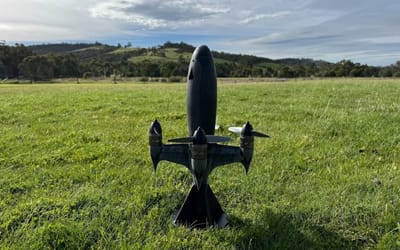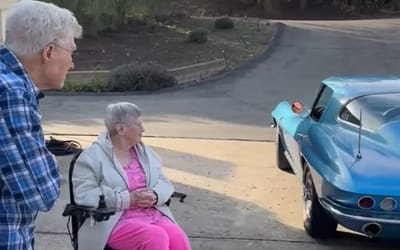The tech in Black Mirror season 7 is freakishly close to some of the futuristic things that exist already
- Season 7 of hit Netflix TV show Black Mirror has blasted onto screens
- There is no doubt that art is imitating life when it comes to tech
- Some of the show’s tech is freakishly similar to the tech you see in real life
Published on Apr 14, 2025 at 12:56 PM (UTC+4)
by Daisy Edwards
Last updated on May 15, 2025 at 8:07 PM (UTC+4)
Edited by
Kate Bain
Season 7 of the hit Netflix show Black Mirror has finally hit screens and some of the tech has gotten freakishly close to reality.
We’ve got altered memories, remodeling brains and even a super-computer.
It seems that with every episode, a Black Mirror-esque future gets closer and closer and seems as though the show creator Charlie Brooker is somehow able to predict the future.
Let’s take a look at some of the Black Mirror tech to see exactly where life imitates art.
EXPLORE SBX CARS – Supercar auctions starting soon powered by Supercar Blondie
The tech in Black Mirror season 7 is freakishly close to real life
Fans of the Netflix megahit, AKA people who don’t like sleeping peacefully at night – will be overjoyed to be able to sink their teeth into six new episodes of the dystopian tech nightmare that is Black Mirror.
Over the past seven seasons, we’ve been treated to some very scary scenarios of tech gone bad.
Even though the hit show is in an anthology style, we’re going to go through the tech season by season to see just how freakishly life imitates art.
Season 1 Episode 3: The Entire History of You
Season 1 episode 3 of Black Mirror introduces us to a fictional tech gadget called a grain, which one can assume eventually becomes season 7’s ‘nubbin’.
The gadget gives the characters a chance to capture and record memories and store them so that they can go back to them again and again.
While it is not an implant in someone’s head, tech giant Samsung has been awarded a patent for smart contact lenses which take photos when the wearer blinks, and then are saved on a connected smartphone.


Season 2 Episode 1: Be Right Back
This episode is a real tear-jerker, and tells the story of a grieving widow who’s partner was really into social media.
A company used the online presence of the deceased man to recreate a life-like AI version of him that looked, sounded and acted like him – and even had his memories.
Hanson Robotics actually created and released a robot called BINA48 in 2010 and was modelled on a real life (alive) human being Bina Aspen, the wife of the company’s owner, and has been fed hundreds of hours of her memories, feelings and beliefs.
According to the company website, the robot ‘engages in conversation with other humans, such as offering an emotional account of her brother’s personality changes after returning home from the Vietnam War’.

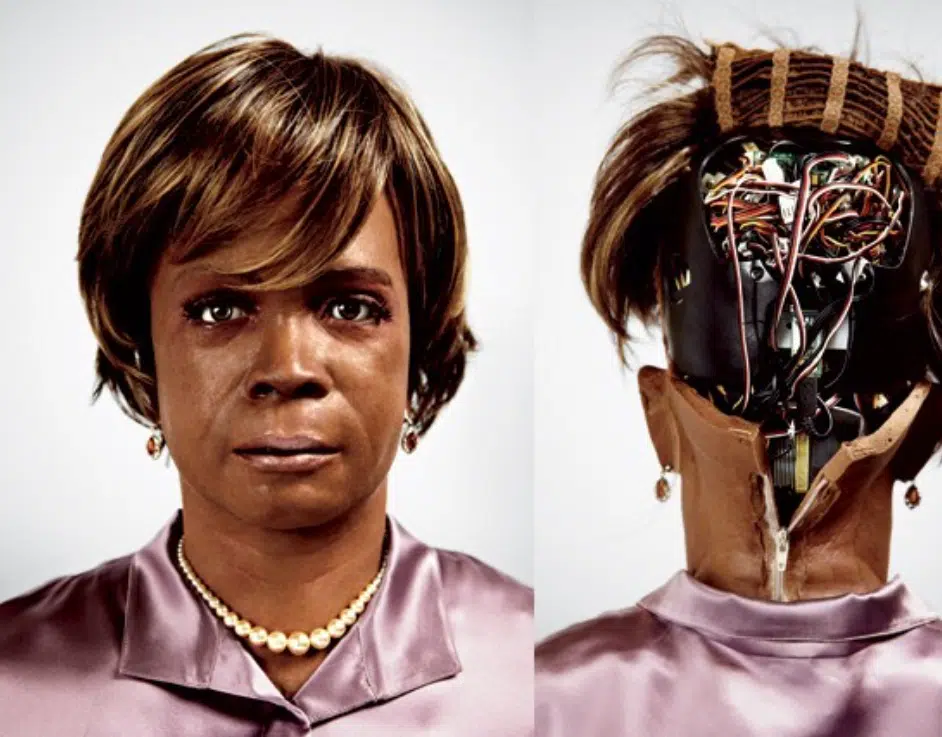
Season 2 Episode 3: The Waldo Moment
This episode introduces us to a computer animated blue bear called Waldo who pranks politicians by asking vulgar questions.
The animated bear flew too close to the sun and was jokingly elected to actually be a politician.
Interactive animated characters have been around for a while as character meet and greets at theme parks like Epcot at Disneyworld in Florida, children are able to interact with characters like Crush the turtle from Finding Nemo in an interactive Turtle Talk with Crush exhibit.
You can watch it below.
Around the time of the episode’s release, Apple announced its Animoji’s – which at the time were revolutionary – but are now just a way to send a shark singing Taylor Swift to your friends.
The official Black Mirror social media accounts poked fun at the similarity too.
— Black Mirror (@blackmirror) September 12, 2017
Season 2 Christmas special: White Christmas
Nothing says festive cheer like a never ending loop of days stuck in your estranged in-laws house while the Wizzard hit ‘I wish It Could be Christmas Everyday’ plays on a loop.
Black Mirror uses this episode to introduce us to ‘cookies’, a digital replica of a person who can be replicated as many times as possible and forced to do menial labor.
There’s two aspects of this that bleed into real life, the use of the phrasing ‘cookies’ could be referencing the ‘cookies’ that follow us around online that you have to accept or deny on new websites.
When we go on a user journey online, we leave a digital trail behind us, helping advertisers and algorithms get to know what we like so they can better advertise to us.
When it comes to the cookies’ job in this episode, it is to run the household and do things like open blinds and play music – all things our Alexas are capable of doing.
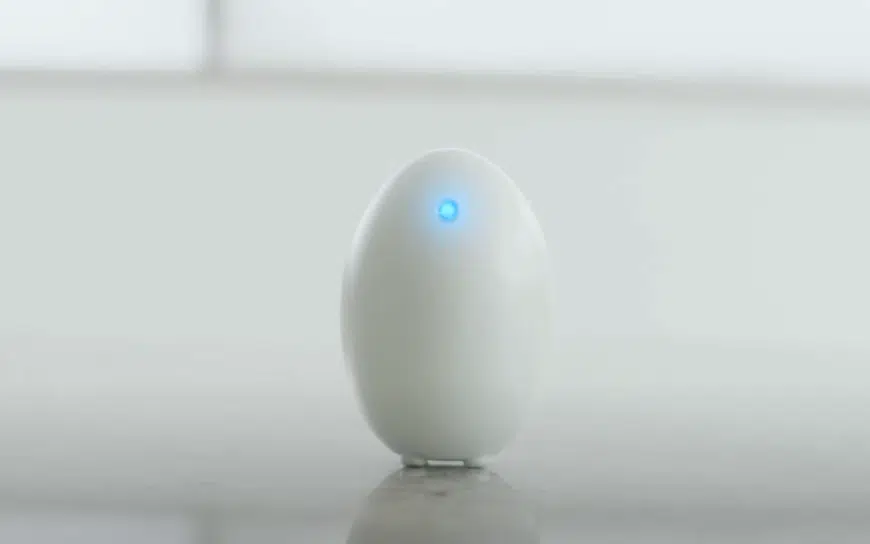
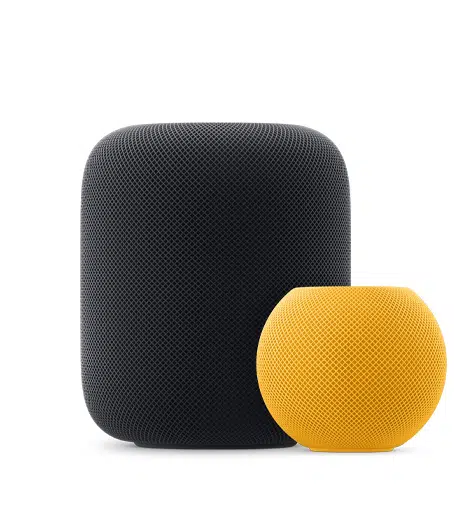
Season 3 Episode 1: Nosedive
This episode shows a perfect world where everyone has to be nice to everyone lest they face a 1 star rating. It’s not just taxis and food drop-offs; it’s everything.
If people have low ratings, then they lose their jobs and lose access to high-quality goods and housing.
We already have systems on which we rate people on a 5-star system including Uber, Door Dash, and Airbnb, so this world is an already very real thing, luckily it’s not for everything just yet.
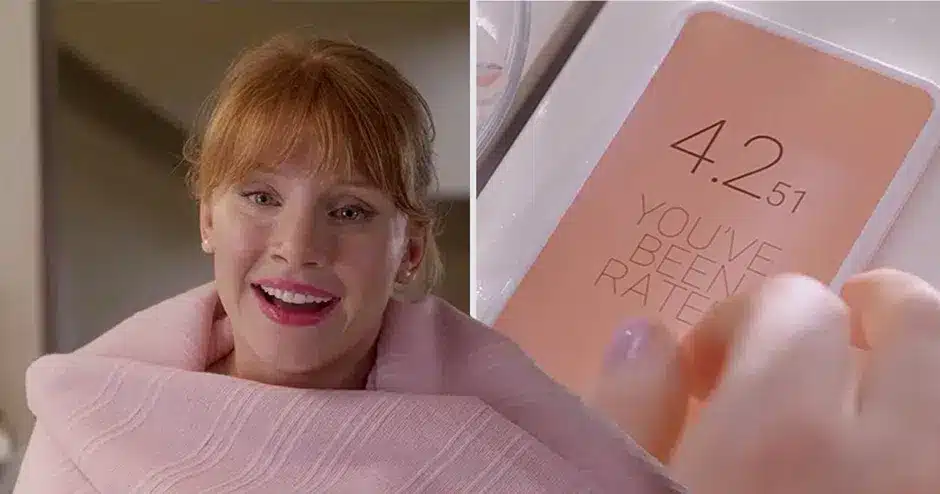
Season 3 Episode 6: Hated in the Nation
In this episode, we encounter new robots which are meant to counter the near-extinction of honeybees.
A company has created RoboBees called ‘Autonomous Drone Insects’ (ADIs) which act just like normal bees, only a bit more murderous and we’re given a bit more information about them in the Common People episode of season 7.
Robobees actually already exist in real life and were invented by scientists at the Wyss Institute to help with rescue missions, pollination and environmental monitoring, let’s hope these guys just stick to the job.


Season 4 Episode 3: Crocodile
This episode is a fantastic episode where it’s a race against time for a woman who has the surveillance state out to get her after she killed someone.
In the episode, a cyclist gets knocked off his bike by a self-driving pizza delivery truck.
Tesla’s FSD is a real thing, but to take it one step further, in 2018 Pizza Express announced a partnership with Toyota to create a self-driving pizza delivery van, wonder if they were inspired by Netflix?
Introducing the first Pizza Hut fully autonomous delivery concept vehicle. Excited for our future with @Toyota #CES2018 pic.twitter.com/YGNQUgijha
— Pizza Hut (@pizzahut) January 8, 2018
Season 4 Episode 6: Metalhead
This is a fully black and white episode about a woman who is basically one of the last survivors in a world full of robot dogs who want to kill her.
They walk like dogs, track their prey like dogs and also wield knives.
Boston Dynamics created a dog robot called ‘Spot’, which are so similar that they appear to have inspired the Netflix episode.
Many viewers at the time pointed out the similarities.
The robotics company’s Spot is really cute though and a feat of engineering, just no-one let him near any knives just in case.

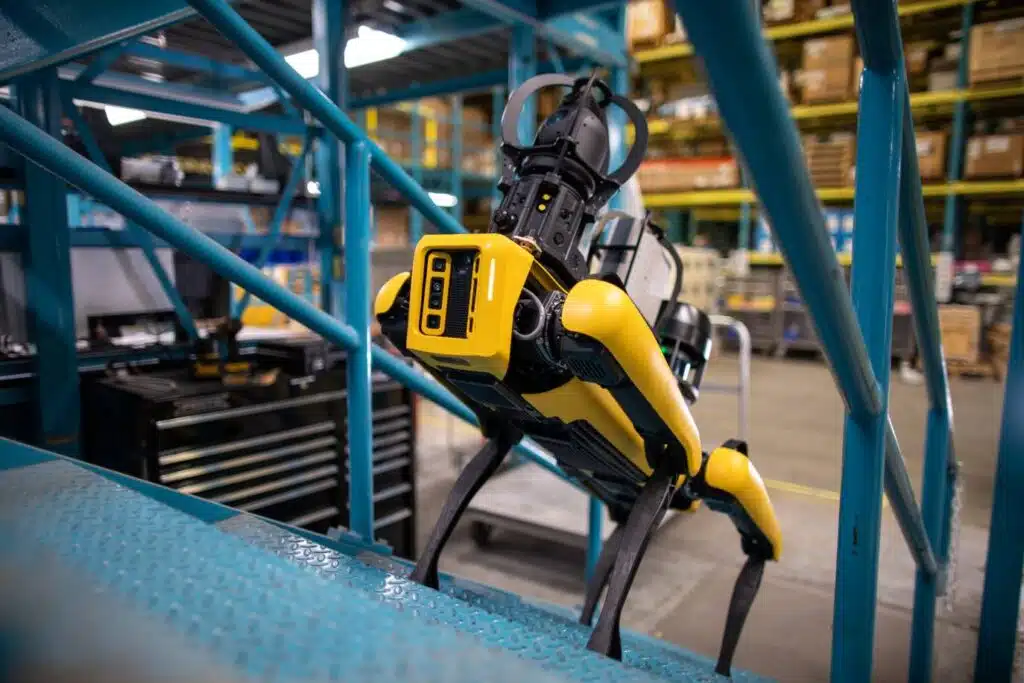
Various VR games episodes
The gaming industry has not been let off the hook when it comes to being black-mirrorified – including season 4’s USS Callister and season 6’s Striking Vipers.
VR headsets have been around for a long time and we see advancements in gaming that makes the games feel more and more real all the time.
Full body trackers like the Vive Tracker have been developed to track gamers’ every movement and open world systems like the Metaverse have opened up avenues for full immersion in relatively open worlds.
We also got the first ever Black Mirror sequel in season 7 with USS Callister: Into Infinity, which further developed the gaming mechanics.
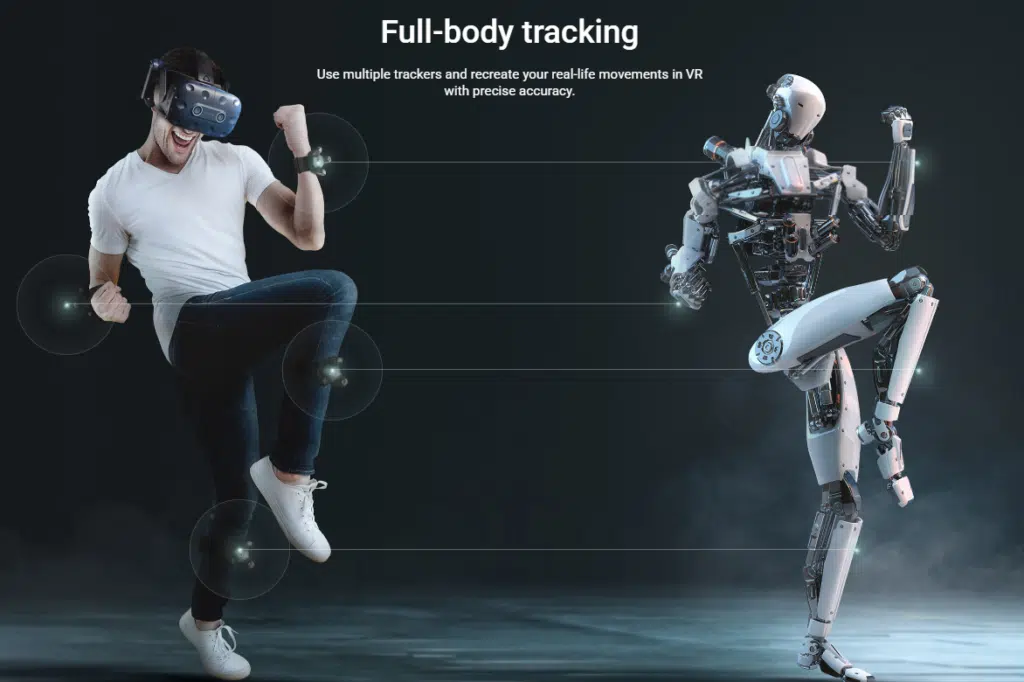
Season 7 Episode 1: Common People
We’re brought bang up to date with what is potentially the most harrowing episode of Black Mirror ever.
This episode follows a couple whose lives are torn apart by brain cancer and they’re put on this fictional experimental technology where the infected part of the brain is scanned and mimicked, then removed and replaced by artificial synapses which are developed using the memories.
Shockingly, the USC Viterbi School of Engineering and Keck School of Medicine USC have been working together to develop a way of helping patients with traumatic brain injuries or brain tumors to remember things again.
According to the study, it works by ‘effectively rebuilding a broken bridge in the hippocampus’.
“The device works by recording information from the upstream region of the patient’s brain and then, via cable, feeding that information into external hardware housing [a] computational model, which has been built from vast amounts of brain data to mimic the natural signaling behavior of the brain.”
Sound familiar?

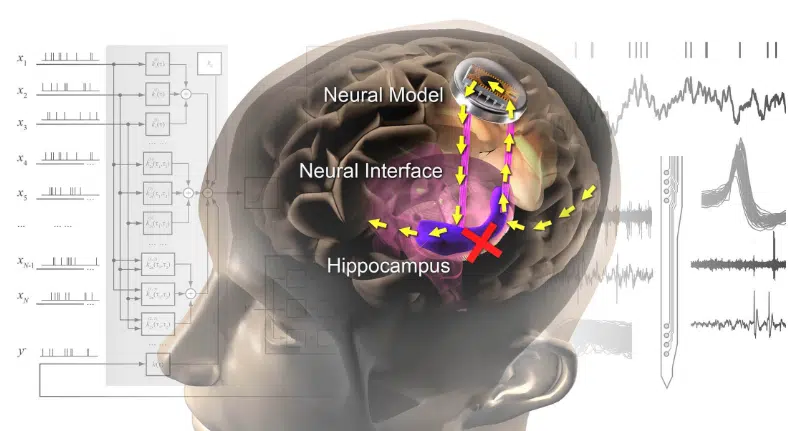
Season 7 Episode 5: Eulogy
In this episode, Paul Giamatti uses the previously aforemention nubbin to go back into his conscience to try and recreate memories of his ex-girlfriend for a eulogy.
The nubbin is not real, but the fictional company TCKR who created it have a website where you can even apply for a job to work for the company and the device is being sleekly advertised like an Apple product.
Influencers were even sent their own nubbins to try out, but these were just non-functional marketing ploys.
However, in real life, companies like Neuralink are working on brain-based implants to help with various health problems.
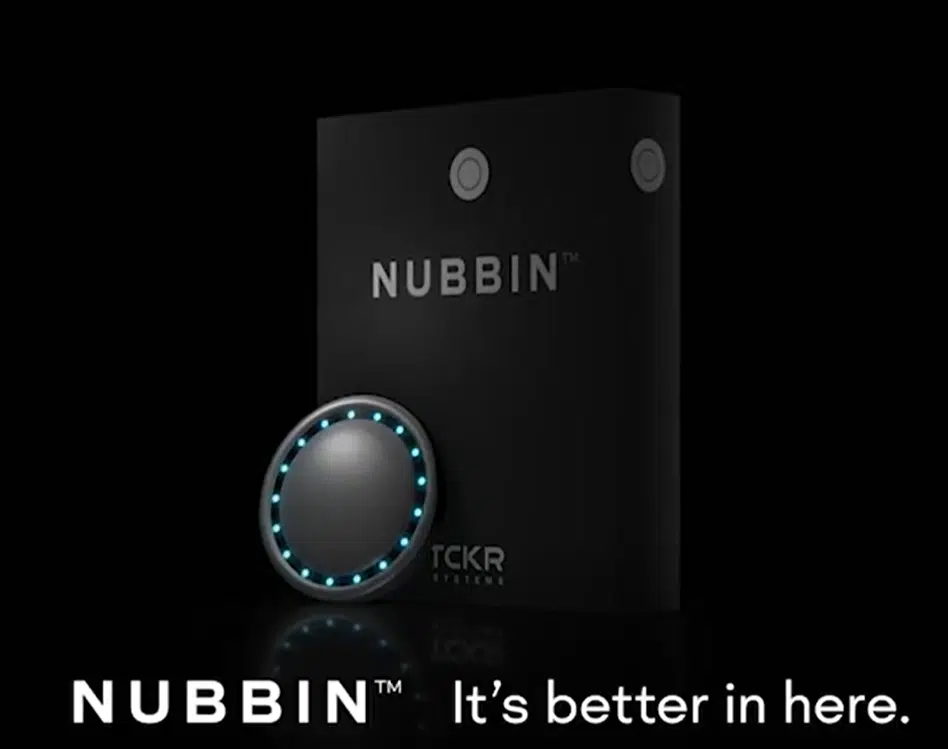

So, there you have it, all of the tech that can be found in the Black Mirror universe! Are you sufficiently spooked yet?
DISCOVER SBX CARS: The global premium car auction platform powered by Supercar Blondie
Daisy Edwards is a Content Writer at supercarblondie.com. Daisy has more than five years’ experience as a qualified journalist, having graduated with a History and Journalism degree from Goldsmiths, University of London and a dissertation in vintage electric vehicles. Daisy specializes in writing about cars, EVs, tech and luxury lifestyle. When she's not writing, she's at a country music concert or working on one of her many unfinished craft projects.


